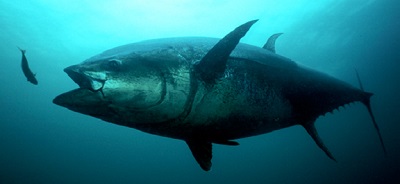Heart Toxicity Found by Deepwater Horizon Research
While studying the impact of the 2010 Deepwater Horizon oil spill on tuna, a research team led by Barbara Block, a professor of marine sciences, discovered that crude oil interrupts a cellular pathway that allows fish heart cells to beat effectively. The components of the pathway are present in the hearts of many animals, including humans.
 While crude oil is known to be cardiotoxic to developing fish, the physiological mechanisms underlying its harmful effects were unclear. The scientists from Stanford University and the National Oceanic and Atmospheric Administration (NOAA) have discovered that the toxic consequence is a slowed heart rate, reduced cardiac contractility and irregular heartbeats that can lead to cardiac arrest and sudden cardiac death.
While crude oil is known to be cardiotoxic to developing fish, the physiological mechanisms underlying its harmful effects were unclear. The scientists from Stanford University and the National Oceanic and Atmospheric Administration (NOAA) have discovered that the toxic consequence is a slowed heart rate, reduced cardiac contractility and irregular heartbeats that can lead to cardiac arrest and sudden cardiac death.
Crude oil is a complex mixture of chemicals, some of which are known to be toxic to marine animals. Past research has focused in particular on "polycyclic aromatic hydrocarbons" (PAHs), which can also be found in coal tar, creosote, air pollution and stormwater runoff from land. In the aftermath of an oil spill, PAHs can persist for many years in marine habitats and cause a variety of adverse environmental effects.
The researchers report that oil interferes with cardiac cell excitability, contraction and relaxation – vital processes for normal beat-to-beat contraction and pacing of the heart. Their tests revealed that very low concentrations of crude oil disrupt the specialized ion channel pores – where molecules flow in and out of the heart cells – that control heart rate and contraction in the cardiac muscle cell. This cyclical signaling pathway in cells throughout the heart is what propels blood out of the pump on every beat.
The researchers found that oil blocks the potassium channels distributed in heart cell membranes, increasing the time to restart the heart on every beat. This prolongs the normal cardiac action potential, and ultimately slows the heartbeat. The potassium ion channel impacted in the tuna is responsible for restarting the heart muscle cell contraction cycle after every beat, and is highly conserved throughout vertebrates, raising the possibility that animals as diverse as tuna, turtles and dolphins might be affected similarly by crude oil exposure.
The Deepwater Horizon disaster released over four million barrels of crude oil during the peak spawning time for the Atlantic bluefin tuna in the spring of 2010. Electronic tagging and fisheries catch data indicate that Atlantic bluefin spawn in the area where the Deepwater Horizon drilling rig collapsed, raising the possibility that eggs and larvae, which float near the surface waters, were exposed to oil.
The spill occurred in the major spawning ground of the western Atlantic population of bluefin tuna in the Gulf of Mexico. The most recent stock assessment, conducted in 2012, estimated the spawning population to be at only 36 percent of the 1970 baseline population. Additionally, many other pelagic fishes were also likely to have spawned in oiled habitats, including yellowfin tuna, blue marlin and swordfish.
The research was funded by NOAA, Stanford University and the Monterey Bay Aquarium Foundation.
